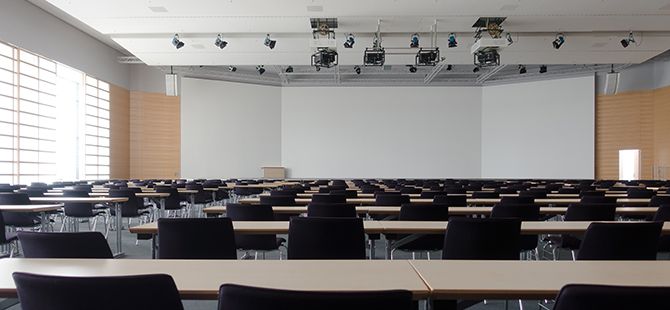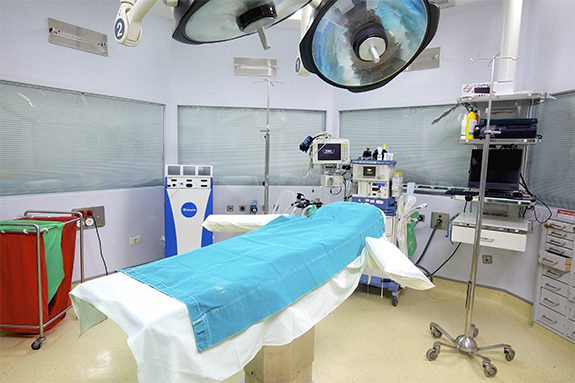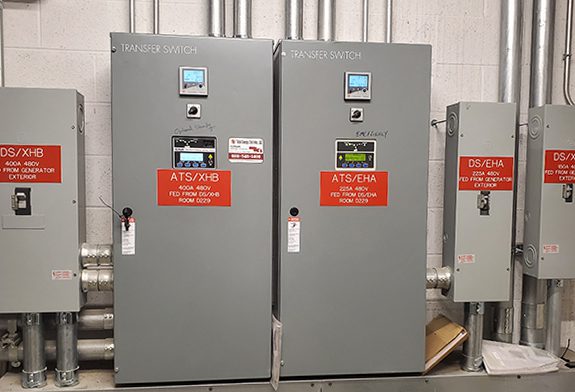Healthcare buildings are under extreme operational demands due to the COVID-19 virus. At the same time, non-healthcare buildings may see the reverse conditions, with limited occupancy and sharply reduced operational hours. G/BA offers this guidance to help facilities stay safe and efficient during this time of disrupted use.
ASHRAE’s position paper on airborne infectious disease is a good reference.
Additional reference material from ASHRAE can be found on this page, including guidance from the Centers for Disease Control, the World Health Organization, and other ASHRAE committees.
The guidance for limiting spread of COVID-19 is clear: Crucial strategies include practicing social distance and enhanced focus on personal hygiene and cleaning/disinfecting of common areas. Primary methods of transfer are thought to be person-to-person contact (through droplets generated by sneezing or coughing) or transfer from contaminated surfaces, where the virus may remain viable for hours or days.
Initial research shows that, under some circumstances, the virus may become aerosolized, which could potentially result in carrying the virus through an HVAC system. Though it is currently unknown whether this is a typical method of viral transfer, some basic tips remain useful in this time of developing knowledge.
Use of HVAC to protect occupants
A few strategies may be used to reconfigure HVAC in non-healthcare facilities to help protect occupants from potential transfer through aerosolized virus particles, while supporting overall IAQ and health:
- Make sure economizer functions are enabled in the building automation system. Taking in full outside air and relieving as much return air as possible will help mitigate any viral particles in the return air system. Depending on environmental conditions and ability to heat/cool/dehumidify, it may be beneficial to operate areas where employees are still working at a higher than normal relief rate, even if conditions are outside the usual economizer range. Be careful not to sacrifice humidity control, especially in hot and humid climates.
- Maintain filters in fully operational state, and verify snug fit in the filter racks. Use PPE when changing filters if you have any suspicion that they could be contaminated. Typical filters in commercial buildings are not designed to catch viruses, but reducing the total amount of pollutants will lighten the workload for occupants’ lungs. Increasing MERV ratings on filters to capture viruses may not be feasible due to the added pressure drop and, in many cases, the need to retrofit filter racks. If higher filtration is needed locally, use a portable HEPA unit.
Energy and water efficiency
During this time of social distancing, facilities may be supporting reduced occupancy or be closed. To safely benefit from reduced operating costs, consider these efficiency recommendations:
- Make sure economizer functions are enabled in the building automation system to reduce mechanical cooling.
- Look for ways to consolidate operations and turn off systems by floor, wing, or department to save energy while the space isn’t being used. Systems that can’t turn off may be set at minimum airflow for unoccupied spaces.
- Clear overrides in the BAS that may have been put in place during times of high occupancy to allow the systems to modulate under lighter loads.
- Relax temperature and pressure setpoints where temperature and humidity control aren’t overriding concerns.
- Turn off unneeded parasitic loads that won’t be required in the absence of occupants, such as mini-fridges, TV/cable/AV devices, and computers. (However, it’s best to keep computers on if they will be accessed remotely.) Consider occupancy sensing power strips.
- Don’t turn off cooling systems if they serve data equipment!
- Maintain legionella mitigation best practices. Don’t turn down central DHW systems, and exercise fixtures to maintain a high rate of circulation.
Looking to the future
Taking a long view, facility managers should make notes on how changed occupancy affects building systems, equipment, and conditions. These observations may provide information for retrofits that would be helpful in addressing future times of disrupted use.
We stand ready to assist with advice for safe and efficient operations of all types of facilities.
info@grummanbutkus.com; 847-328-3555



